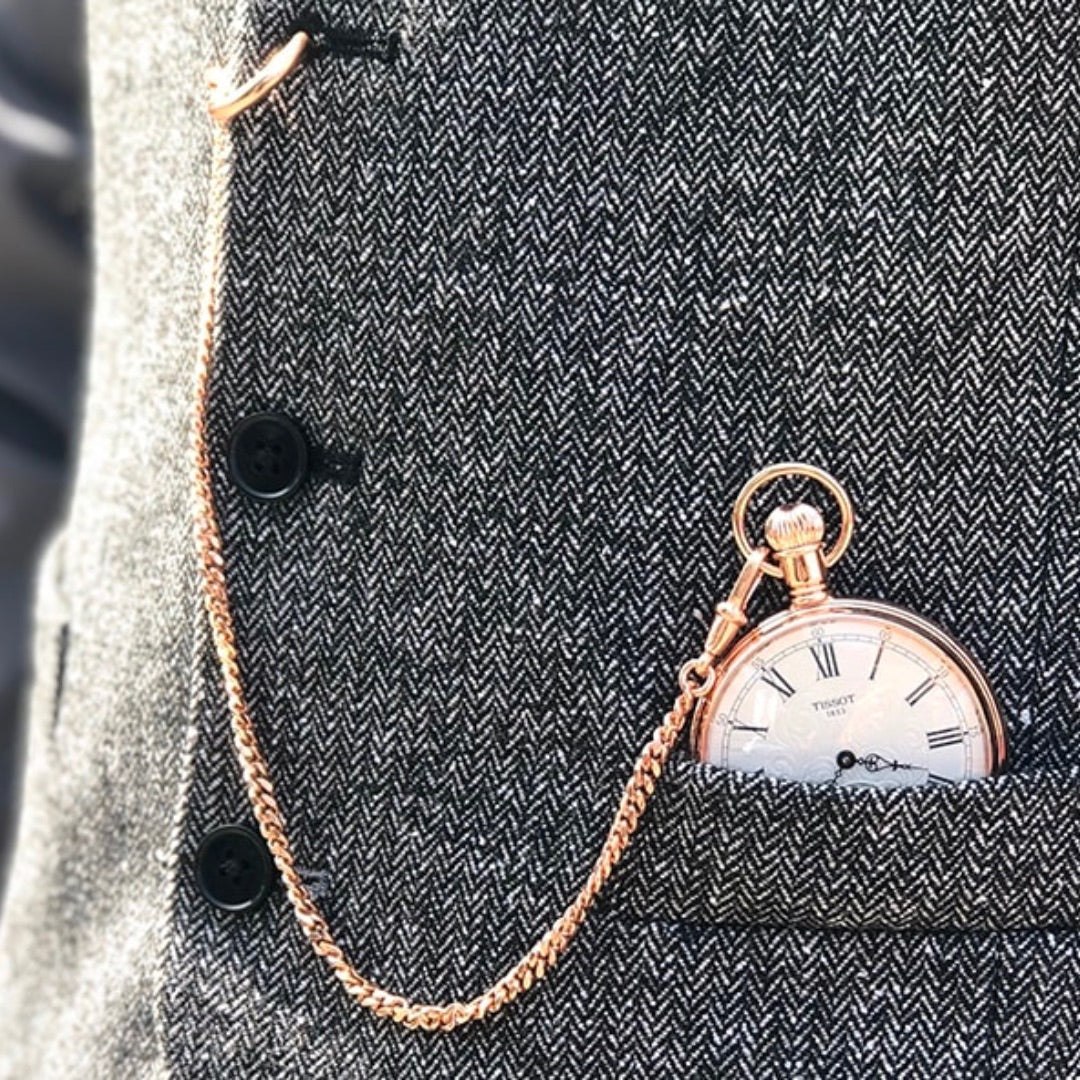
The Case for the Pocket Watch
The dominant personal timepiece these days is the wristwatch (or maybe the cellphone). This was not always the case. The original portable timepieces were pocket watches.
A short history of keeping time
The development of accurate pocket watches was driven by the railroads, and it was pocket watches that made the trains run on time. Images of train conductors and engineers consulting their pocket watches to ensure timely arrival at the next station are iconic, part of our national DNA.
The change from pocket watches to wristwatches came about for very practical reasons during World War II. For tactical purposes, it was necessary for soldiers to know the time, and they found that strapping the watch to their wrist worked best. Both hands were available for other uses and the watch was securely attached to avoid losing it in action.

Wrist watches circa World War II
So many of our style conventions seem to come from WWII (cuff less trousers, smaller jacket lapels, low-rise trousers and the focus on single-breasted jackets). The wristwatch very quickly almost completely replaced the pocket watch. It is difficult to find a pocket watch in stores these days.
While I have owned many wristwatches over the years, I find them very uncomfortable to wear, a phenomenon I can’t really explain. Invariably the wristwatch ends up being carried in my pocket. And I have had many pocket watches.
Pocket watches and style
From a style perspective, there are some interesting features about carrying a pocket watch. Usually the watch has a chain or fob to make it easier to locate the watch and prevent losing it. While the watch itself is an accessory, the chain is also an accessory and both can be attractive. The pocket watch really comes into its own when worn with a waistcoat. The watch is carried in a lower waistcoat pocket and the chain is attached to a button hole.

Some dress trousers still have a special pocket for a pocket watch. In fact, many jeans still have the small watch pocket in addition to the usual larger pockets, a feature they have had since jeans were first made in the late 1800s. Working people needed to know the time on the job and this made carrying a watch easy. (So that’s what that little pocket is for.)
While there is little chance the pocket watch will make a comeback anytime soon, it is an interesting style option to consider. An elegant timepiece for a more civilized age (as Obi-Wan might say).


